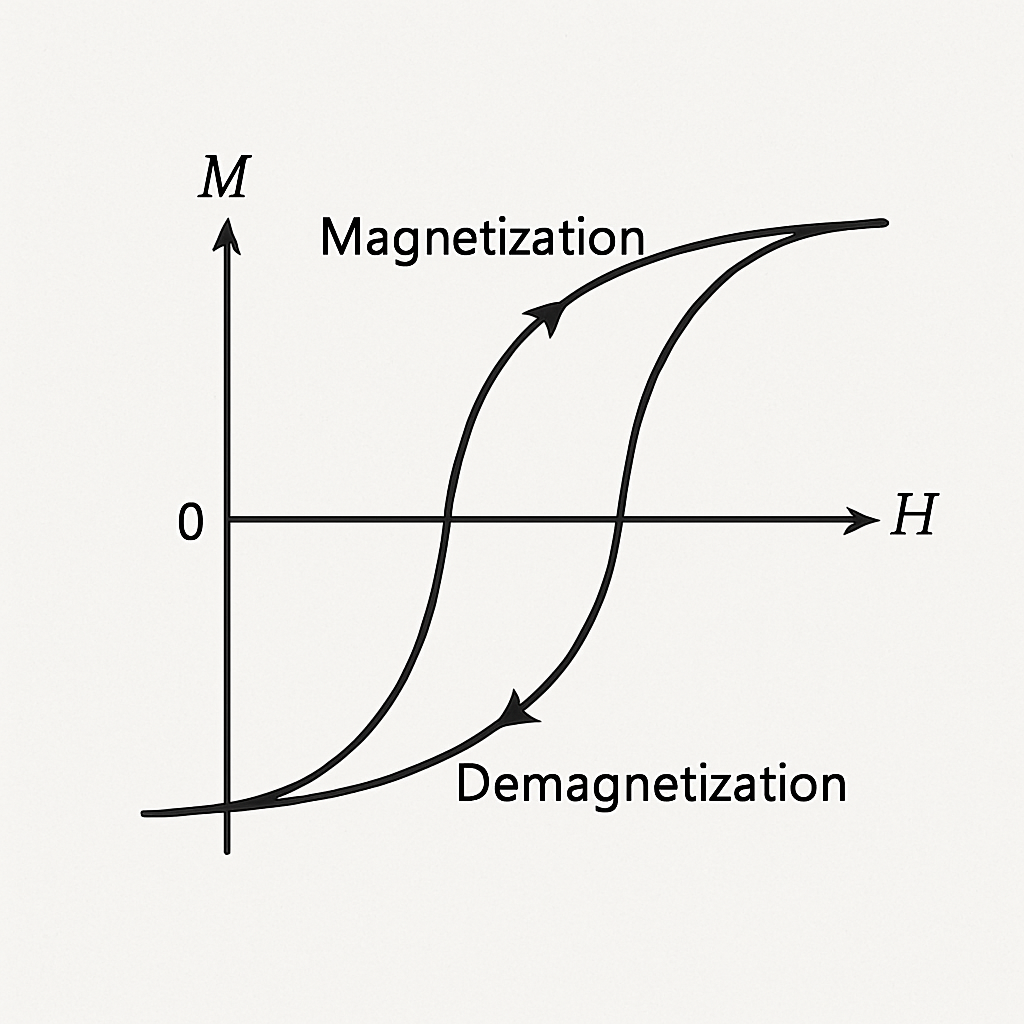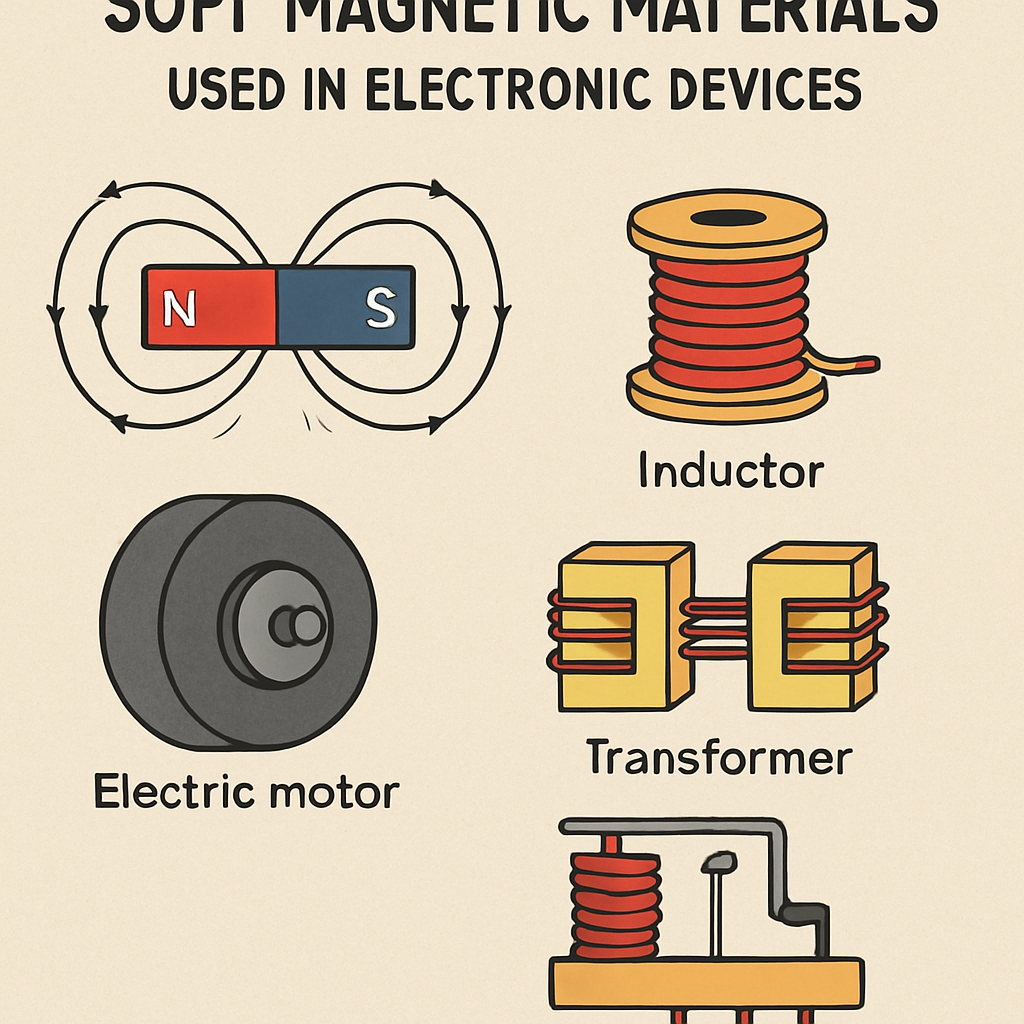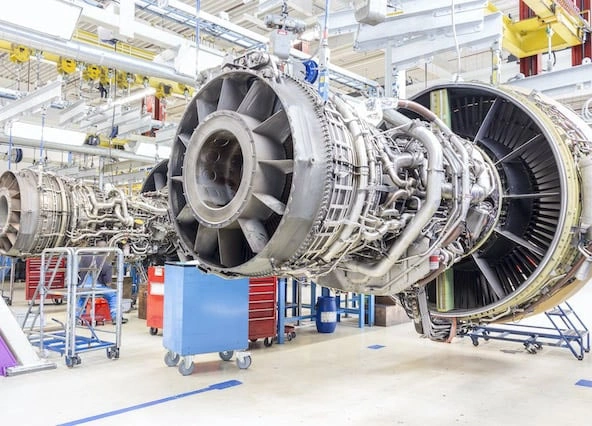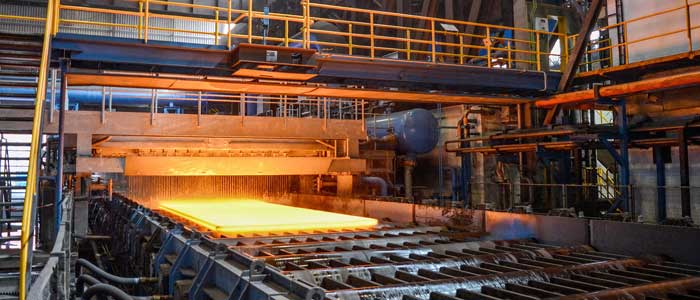Understanding the hysteresis loop of soft magnetic materials is crucial for industries that rely on efficient electromagnetic systems. These materials, including ferromagnetic substances and soft magnetic alloys, exhibit unique properties that influence their performance in various applications. In today’s technologically driven world, the demand for efficient and reliable electromagnetic components is higher than ever, making the comprehension of hysteresis loops not only important but indispensable for engineers and designers.
The ability to manipulate and enhance the performance of soft magnetic materials can lead to significant advancements in various fields, such as telecommunications, automotive engineering, and renewable energy systems. By mastering the intricacies of their hysteresis properties, industries can innovate and refine technologies that form the backbone of modern society, driving both economic growth and technological progress.
A hysteresis loop is a graphical representation of the relationship between the magnetic field strength (H) and the magnetization (B) of a magnetic material. When an external magnetic field is applied to a ferromagnetic material, it becomes magnetized. As the field is changed, the material’s magnetization doesn’t immediately follow the external field changes, resulting in a loop shape when graphed. This phenomenon is not just a theoretical concept but a practical illustration of the lag between input and output in magnetic systems.
The hysteresis loop is fundamental in understanding the energy dynamics within magnetic materials. It provides a visual and quantitative means to assess how a material retains and loses energy during cycles of magnetization and demagnetization. Engineers and scientists use this data to optimize materials for specific applications, ensuring that energy efficiency and performance are maximized while minimizing losses.
The Basics of Magnetic Hysteresis
The concept of hysteresis is central to understanding how magnetic materials behave. When a magnetic field is applied to a magnetic material, its domains align, increasing magnetization. However, removing the field doesn’t instantly demagnetize the material; instead, some residual magnetization, or remanence, remains. This characteristic is crucial for applications requiring stable magnetic properties over time.
The hysteresis loop visually represents this process, showing how the material responds to increasing and decreasing magnetic fields. The loop’s shape and size provide insights into the material’s properties, including coercivity, retentivity, and magnetic loss. These parameters are essential for determining the suitability of a material for specific applications, as they dictate how easily a material can be magnetized and demagnetized, as well as how much energy is lost in the process.
Characteristics of Soft Magnetic Materials
Soft magnetic materials are known for their low coercivity and high permeability, making them ideal for applications requiring rapid magnetization and demagnetization. These properties enable efficient energy conversion and minimal energy loss, crucial for transformers, inductors, and electric motors. Their unique characteristics make them indispensable in modern electronic devices, where the demand for energy efficiency is ever-increasing.
The ability of soft magnetic materials to operate effectively at high frequencies without significant energy loss is a key factor in their widespread use. As industries push towards more compact and efficient designs, the properties of these materials become even more valuable. Their role in reducing energy consumption and improving device performance cannot be overstated, highlighting their importance in sustainable technology development.
Key Properties of Soft Magnetic Materials
- Low Coercivity: Soft magnetic materials require a small magnetic field to become demagnetized. This property allows them to switch their magnetization direction easily, reducing energy loss during this process. The low coercivity is particularly beneficial in applications where frequent magnetic field reversals occur, as it minimizes the energy required for each cycle.
- High Permeability: These materials have a high magnetic permeability, which means they can become magnetized quickly under an applied magnetic field. This property is essential for applications like transformers, where a quick response to magnetic field changes is necessary. High permeability ensures that devices can operate efficiently, even under varying load conditions, contributing to their reliability and longevity.
- Low Magnetic Loss: Soft magnetic materials exhibit minimal energy loss during magnetization and demagnetization cycles. This characteristic is particularly important in reducing power loss in electrical devices. Lower magnetic loss translates to higher energy efficiency, which is crucial in applications ranging from power generation to consumer electronics, where reducing energy consumption is a top priority.
Understanding the Hysteresis Curve
The hysteresis curve of soft magnetic materials provides critical insights into their behavior under magnetic influence. Here’s a breakdown of the key points on the hysteresis loop, which are essential for evaluating the performance of magnetic materials in real-world applications:
Important Points on the Hysteresis Loop
- Origin: The starting point of the hysteresis loop when no external magnetic field is applied. This point represents the initial state of the material and serves as a reference for measuring changes in magnetization.
- Saturation Magnetization (B_sat): The maximum magnetization level a material can achieve under a strong magnetic field. Reaching saturation indicates that all magnetic domains are aligned, and further increases in the magnetic field will not enhance magnetization, providing a limit to the material’s magnetic capacity.
- Remanence (B_r): The residual magnetization left in the material after removing the external magnetic field. This property is crucial for permanent magnets and affects how long a material can retain its magnetization without an external field.
- Coercivity (H_c): The magnetic field strength required to bring the magnetization to zero, effectively demagnetizing the material. Coercivity is a measure of a material’s resistance to becoming demagnetized and is a key factor in determining its suitability for specific applications.
- Loop Area: Represents the energy loss during a complete cycle of magnetization and demagnetization, known as hysteresis loss. In soft magnetic materials, this area is minimized, reducing energy wastage. Understanding and minimizing this loss is crucial for improving the efficiency of devices that rely on magnetic materials.
Applications of Soft Magnetic Materials
Soft magnetic materials play a vital role in various technological applications due to their unique properties. Here are a few areas where they are extensively used, highlighting their importance in modern technology and industry:
Transformers and Inductors
In transformers, soft magnetic materials help efficiently transfer electrical energy between circuits through electromagnetic induction. Their low magnetic loss and high permeability make them ideal for minimizing energy dissipation. This efficiency is crucial for power distribution networks, where reducing energy loss can lead to significant cost savings and improved reliability.
Inductors, which are used in a wide range of electronic devices, also benefit from the properties of soft magnetic materials. By optimizing the magnetic core, inductors can achieve higher performance and efficiency, leading to more compact and effective designs. The role of soft magnetic materials in these components is essential for meeting the demands of modern electronics.
Electric Motors
Soft magnetic materials are crucial components in electric motors, where they facilitate efficient energy conversion and enhance motor performance. Their ability to rapidly respond to magnetic field changes ensures smooth and efficient operation. This responsiveness is vital in applications such as electric vehicles and industrial machinery, where performance and reliability are paramount.
In addition to improving efficiency, soft magnetic materials contribute to the reduction of noise and vibration in electric motors. This is particularly important in consumer applications, where user experience is a top priority. By leveraging the properties of these materials, manufacturers can produce quieter and more efficient motors that meet the needs of today’s market.
Magnetic Recording and Storage
Soft magnetic materials are also used in magnetic recording and data storage devices. Their high permeability and low coercivity enable quick data writing and reading, essential for modern data storage solutions. As data storage demands increase, the performance of these materials becomes even more critical, supporting the development of faster and more reliable storage technologies.
The ability to store and retrieve data efficiently is a cornerstone of the digital age, and soft magnetic materials play a key role in this process. By optimizing their properties, manufacturers can develop storage devices that meet the growing needs of consumers and businesses, driving innovation and technological progress.
Magnetic Loss in Soft Materials
Magnetic loss is a critical consideration in applications involving soft magnetic materials. It refers to the energy dissipated as heat during the magnetization and demagnetization cycles. Understanding and minimizing magnetic loss is essential for optimizing the performance of electrical devices, as it directly impacts their efficiency and longevity.
Reducing magnetic loss is not only important for improving device performance but also for environmental sustainability. By minimizing energy dissipation, industries can reduce their carbon footprint and contribute to global efforts to combat climate change. This makes the study and optimization of magnetic loss a priority for researchers and manufacturers alike.
Factors Affecting Magnetic Loss
- Frequency: Higher frequencies increase magnetic loss due to increased hysteresis cycles per unit time. This is particularly relevant in high-frequency applications, where managing magnetic loss is essential for maintaining efficiency and performance.
- Material Quality: Impurities and structural defects in the material can contribute to higher magnetic loss. Ensuring high material quality is crucial for reducing energy dissipation and achieving optimal performance in magnetic applications.
- Temperature: Elevated temperatures can increase magnetic loss by affecting the material’s magnetic properties. Managing temperature and selecting materials that perform well under varying conditions is essential for minimizing loss and maintaining device reliability.
Reducing Magnetic Loss
To minimize magnetic loss, manufacturers focus on improving material quality, optimizing the design of magnetic components, and selecting appropriate materials for specific applications. Advanced processing techniques and material innovations continue to play a significant role in reducing energy dissipation. By investing in research and development, industries can develop new materials and technologies that further minimize magnetic loss and enhance device performance.
Innovations in material science, such as the development of nanocrystalline and amorphous materials, offer promising avenues for reducing magnetic loss. These materials have unique properties that can significantly improve performance and efficiency, supporting the advancement of modern technology and industry. By embracing these innovations, manufacturers can stay ahead of the curve and meet the demands of an ever-evolving market.
Conclusion
The hysteresis loop of soft magnetic materials provides valuable insights into their magnetic behavior and energy efficiency. Understanding this concept is essential for optimizing the performance of various applications, from transformers and motors to data storage devices. By selecting the right materials and minimizing magnetic loss, industries can achieve greater energy efficiency and improved device performance.
As the world moves towards more sustainable and efficient technologies, the role of soft magnetic materials becomes increasingly important. By leveraging their unique properties, industries can develop innovative solutions that meet the challenges of the modern world. Continued research and development in this field will pave the way for future advancements, driving progress and enhancing the quality of life for people around the globe.










